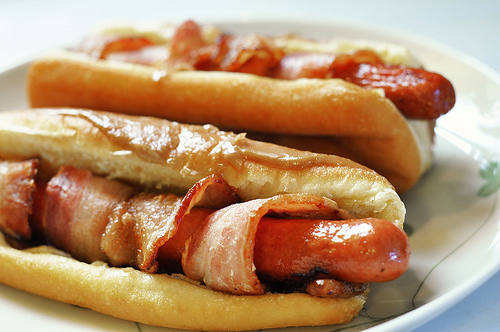Short-Term Benefits
The short-term benefits of eating healthy include, but are not limited to:
The short-term benefits of eating healthy include, but are not limited to:
- Sustained energy : Food is fuel. Nourishing the body with the best forms of fuel will provide it with sustained, consistent energy to fulfill any activity needs. For example, iron helps your muscles and brain to function at optimal levels, as well as boost your immune system. The correct diet will make you perform, feel, and look your best on a daily basis.
- Proper Growth : The most important time to nourish the body is during young adulthood — when puberty occurs. It is important to take advantage of this stage of rapid growth and development. Healthy eating helps teens grow to their potential.
- Feel Better : While it may seem obvious, your body does feel better when you eat more healthily. Your body is getting more nutrients. These nutrients help your blood flow better, and it increases the efficiency and effectiveness of your endorphins, hormones in the brain that produce a chemical that gives the feel of happiness.
- Perform Better : Eating healthily provides nutrients that your body needs to perform well, whether it be academically or physically. There have been studies that have shown that there are certain nutrients and vitamins in foods like dark leafy green vegetables and milk that can improve concentration and memory in academic subjects. Eating healthy also helps in sports. It can help a person train longer and harder, prevent fatigue for a longer period of time, help to quicken recovery and to adapt to a workout more effectively and more quickly. It can also help to get rid of mid-activity inconveniences such as cramps, headaches, or side pain.
- Assists in Building Muscles & Bones : Building muscle and bone mass is important at an early age because teenage and childhood years are the times at which a person absorbs the most nutrients and uses them most effectively. When a person enters their adult or senior years, their body cannot absorb or use the nutrients that the same teenager could have. For example, if a person acquires osteoporosis, a degenerative bone disease, later in life, they can try to take heavy calcium supplements to regrow the bone mass. This doesn't work, however, because their body can't take the calcium and use it the way they could have 30-50 years ago. Muscular growth is also very effective in the teenage years, and it works the same way that bones do, except with protein instead of calcium.
Long-Term Benefits
The long-term benefits of eating healthy include, but are not limited to:
The long-term benefits of eating healthy include, but are not limited to:
- Good Eating Habits : Eating healthy during adolescence will build eating habits that will benefit you throughout life.
- Disease Prevention : Healthy foods can lower the risk of fatal diseases. For example, eating foods that are high in vitamin D levels can help prevent cancer, and eating foods that are low in sugars lowers the risk of getting diabetes. Some foods have even been proven to cause cancer, heart disease, and increased chances of heart attack, such as overcooked meats and hydrogenated oils.
- Increased Vitality & Longevity : A healthy diet supplies your cells with the right nutrition to keep them going strong for years to come. As you get old, your cells and body start to degenerate. Eating plenty of vitamins C and E help prevent against cell damage and can add years to you life.
- Weight loss : Again, it sounds obvious. Eating healthily can help a person lose weight. But some people don't realize how important and how big of a role a person's eating habits play in their weight loss. Of course, exercise is just as, if not more important to a healthy lifestyle, but you can't go wrong with healthy eating. Eating fruits and vegetables can be a huge benefit because they have very few calories, refined sugars, and unhealthy fats in them, while still holding a high volume. This means that your body can easily be filled up without any issues of overconsumption. You can fulfill your bodies needs with less, and maintain the same metabolism. This causes a higher burning of fat, causing a person to lose weight.

- Habit Building : Eating healthily at an early age starts to build habits. Your body becomes able to adapt to eating certain types of foods, while losing the cravings for the more unhealthy consumables. Your body then "thinks" that the healthier foods that you're eating more and more are the normal foods you should be eating. It works the same way with unhealthy fast foods and sweets, but it's a better idea to get in the habit of eating the foods that provide you more health benefits.
Sources:
Padilla, Michael J., Martha Cyr, and Ioannis Miaoulis. Prentice Hall Science Explorer: Human Biology and Health. Needham, MA: Pearson Prentice Hall, 2005. Print.
http://www.livestrong.com/article/452031-why-is-it-important-to-eat-healthy-foods/
Padilla, Michael J., Martha Cyr, and Ioannis Miaoulis. Prentice Hall Science Explorer: Human Biology and Health. Needham, MA: Pearson Prentice Hall, 2005. Print.
http://www.livestrong.com/article/452031-why-is-it-important-to-eat-healthy-foods/
http://www.mealsmatter.org/Articles-And-Resources/Healthy-Living-Articles/Teen-nutrition.aspx
http://www.webmd.com/food-recipes/tc/healthy-eating-overview
http://www.webmd.com/food-recipes/tc/healthy-eating-overview

























